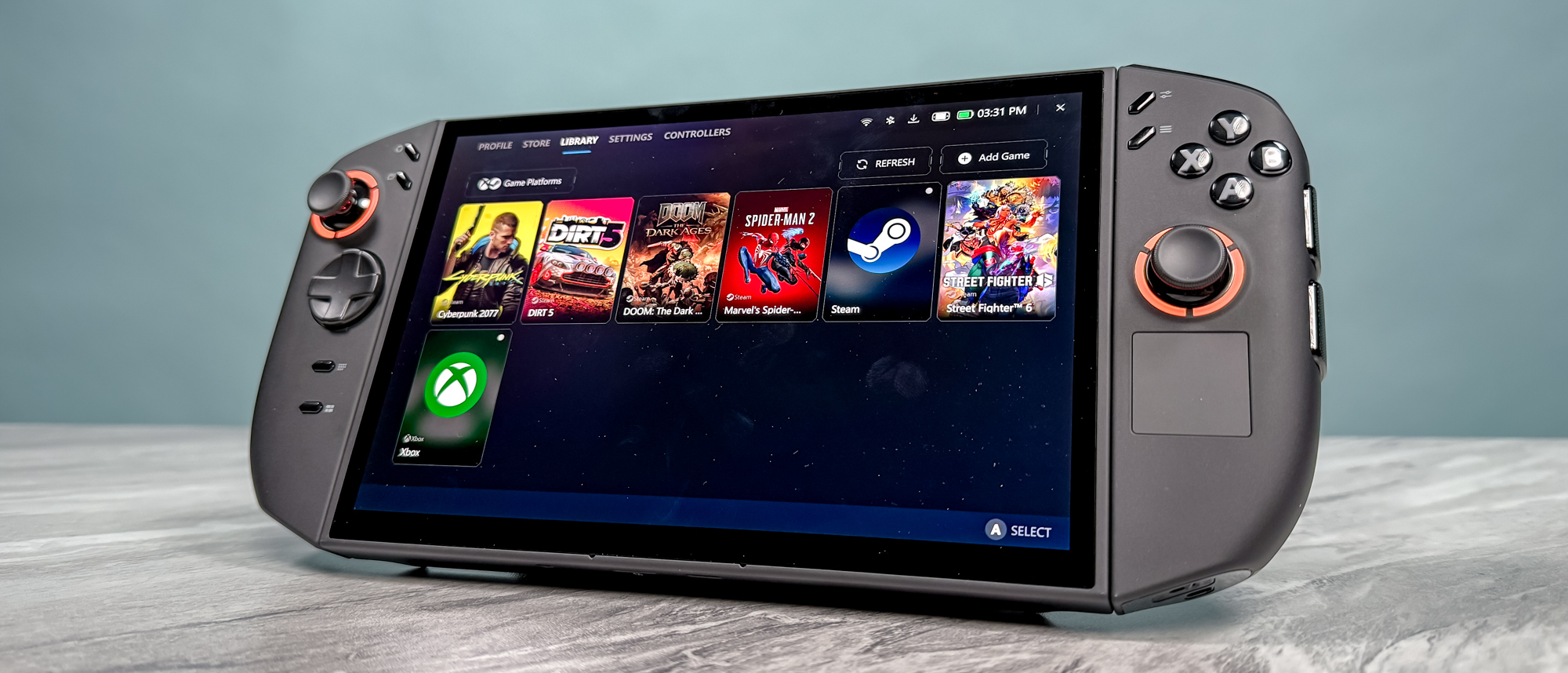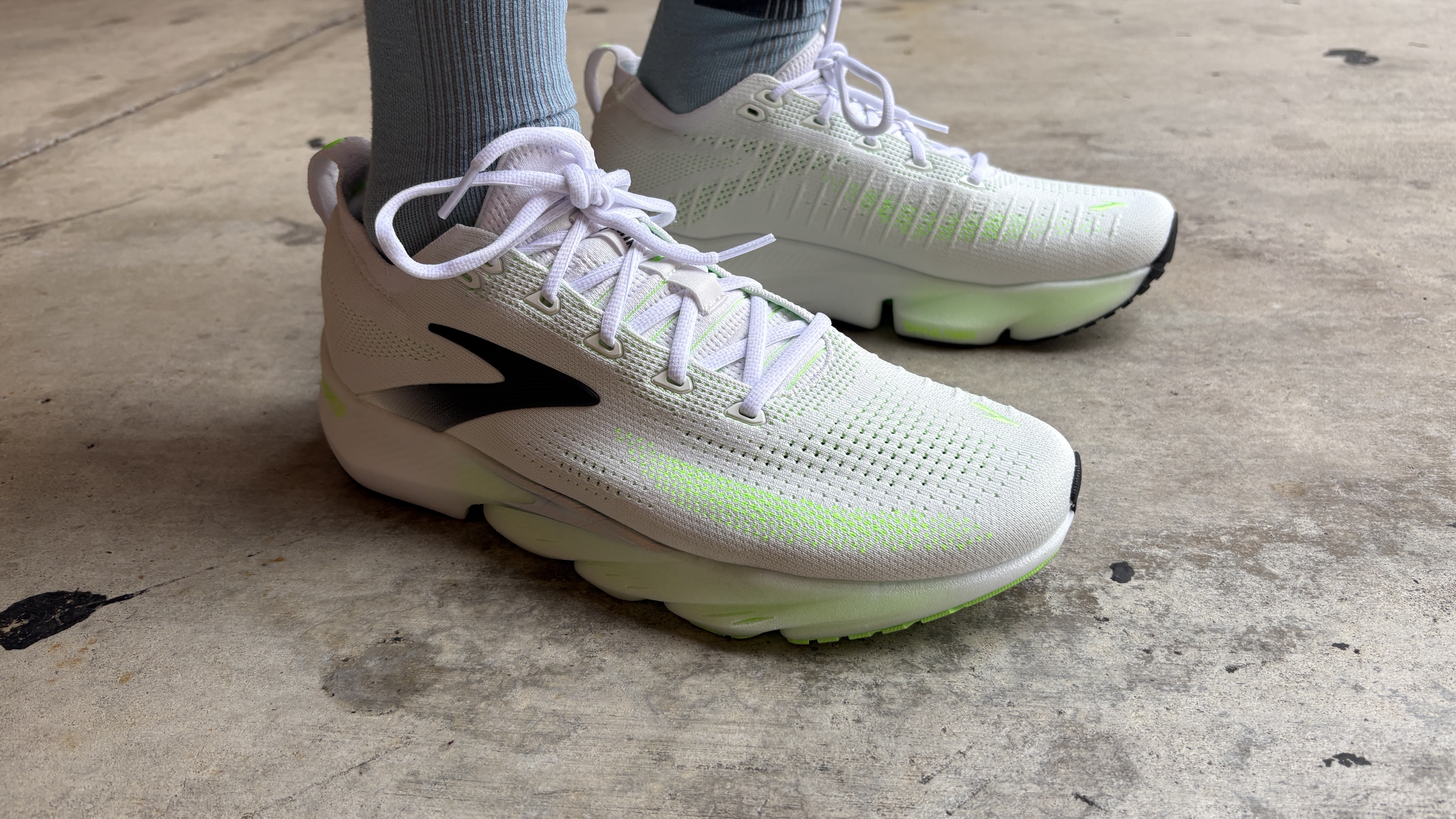Tom's Guide Verdict
The Lenovo Legion Go 2 impresses thanks to its vibrant 8.8-inch OLED panel, comfortable design, detachable controllers and strong gaming performance. Unfortunately, its high asking price, poor battery life and Windows 11 OS prevent it from being an easy recommendation.
Pros
- +
Vivid OLED panel
- +
Ergonomic detachable controllers
- +
Strong AMD Ryzen Z2 performance
Cons
- -
Steep asking price
- -
Runs on Windows 11
- -
Poor battery life
Why you can trust Tom's Guide
The Lenovo Legion Go 2 (starting at $1,099) updates the original Legion Go in meaningful ways thanks to its vibrant OLED panel, ergonomic design and new AMD Ryzen Z2 chip. Like before, Lenovo’s device also has Nintendo Switch 2-like detachable controllers and runs on Windows 11. While the Legion Go 2 is certainly impressive, all those updates come at a steep cost.
Getting into specifics, the large 8.8-inch OLED touch display is a marvel to behold, and makes the 7- or 8-inch panels on rival handhelds appear tiny in comparison. It’s hard to properly convey how great the OLED appears in person, but suffice it to say it’s arguably the best-looking screen on a handheld. I can’t undersell the display even if I tried.
As one of the few gaming handhelds to feature the latest AMD Ryzen Z2 or Ryzen Z2 Extreme chip, the Legion Go 2 is capable of delivering impressive performance. I say it’s “capable” since you’ll need to tinker with the in-game graphics and display settings—not to mention turn on the frame-boosting FSR in games that support it—to get the best results. While you might not see radically better performance in comparison to other handhelds, the extra 5-10 frames can make a big difference.
The Legion Go 2 is the largest gaming handheld from a major manufacturer. While it’s more comfortable to hold thanks to its rounded edges, it can still get heavy after prolonged use. Thankfully, you can use the built-in kickstand and set the device on a desk while you play. You can also detach the controllers while the handheld is in “tabletop” mode, if you want.
While I like what the Legion Go 2 has to offer, it won't be one of the best handheld gaming consoles for everyone—and not just because of the steep asking price that can climb as high as $1,479. As always, Windows 11 is still clunky to use on a handheld. I also wish the battery life were longer.
Faults aside, the Lenovo Legion Go 2’s amazing OLED display, unique design and strong gaming performance might make the system worth the high asking price for some. I’ll detail all of the handheld’s strengths and weaknesses in my full review.
Lenovo Legion Go 2 review: Cheat sheet
- What is it? The Lenovo Legion Go 2 is a gaming handheld featuring an 8.8-inch OLED panel, the latest AMD Z2 chip, and detachable controllers.
- Who is it for? Folks who want a Windows 11 handheld with a large OLED panel, the latest AMD mobile processor and a unique design.
- What does it cost? The Legion Go 2 starts at $1,099 at Best Buy and features the base AMD Z2 chip, 16GB of RAM and a 1TB SSD. Our review unit costs $1,349 and packs the more powerful AMD Ryzen Z2 Extreme chip and 32GB of RAM.
- What do we like? We like the vivid OLED panel, detachable controllers and decent gaming performance.
- What don’t we like? The asking price is high, and Windows 11 still isn’t a great OS for handhelds.
Lenovo Legion Go 2 review: Specs
| Row 0 - Cell 0 | Lenovo Legion Go 2 (starting) | Lenovo Legion Go 2 (tested) |
Price | $1,099 | $1,349 |
Display | 8.8-inch (1920 x1200) OLED 144Hz touchscreen | 8.8-inch (1920 x1200) OLED 144Hz touchscreen |
Chipset | AMD Ryzen Z2 | AMD Ryzen Z2 Extreme |
OS | Windows 11 | Windows 11 |
RAM | 16GB | 32GB |
Storage | 1TB | 1TB |
Battery | 74Wh | 74Wh |
Ports | 2x USB-C, 1x microSD slot, 1x headphone jack | 2x USB-C, 1x microSD slot, 1x headphone jack |
Connectivity | Wi-Fi 6E, Bluetooth 5.3 | Wi-Fi 6E, Bluetooth 5.3 |
Colors | Eclipse Black | Eclipse Black |
Dimensions | 11.64 x 5.38 x 1.66 inches (with controllers attached) | 11.64 x 5.38 x 1.66 inches (with controllers attached) |
Weight | 2.03 pounds (controllers attached) | 2.03 pounds (controllers attached) |
Lenovo Legion Go 2 review: The ups
The Legion Go 2 stands out thanks to its vibrant 8.8-inch OLED panel and Switch-like detachable controllers. And with some settings tweaks, it can also deliver strong gaming performance.
Get instant access to breaking news, the hottest reviews, great deals and helpful tips.
Vivid OLED panel
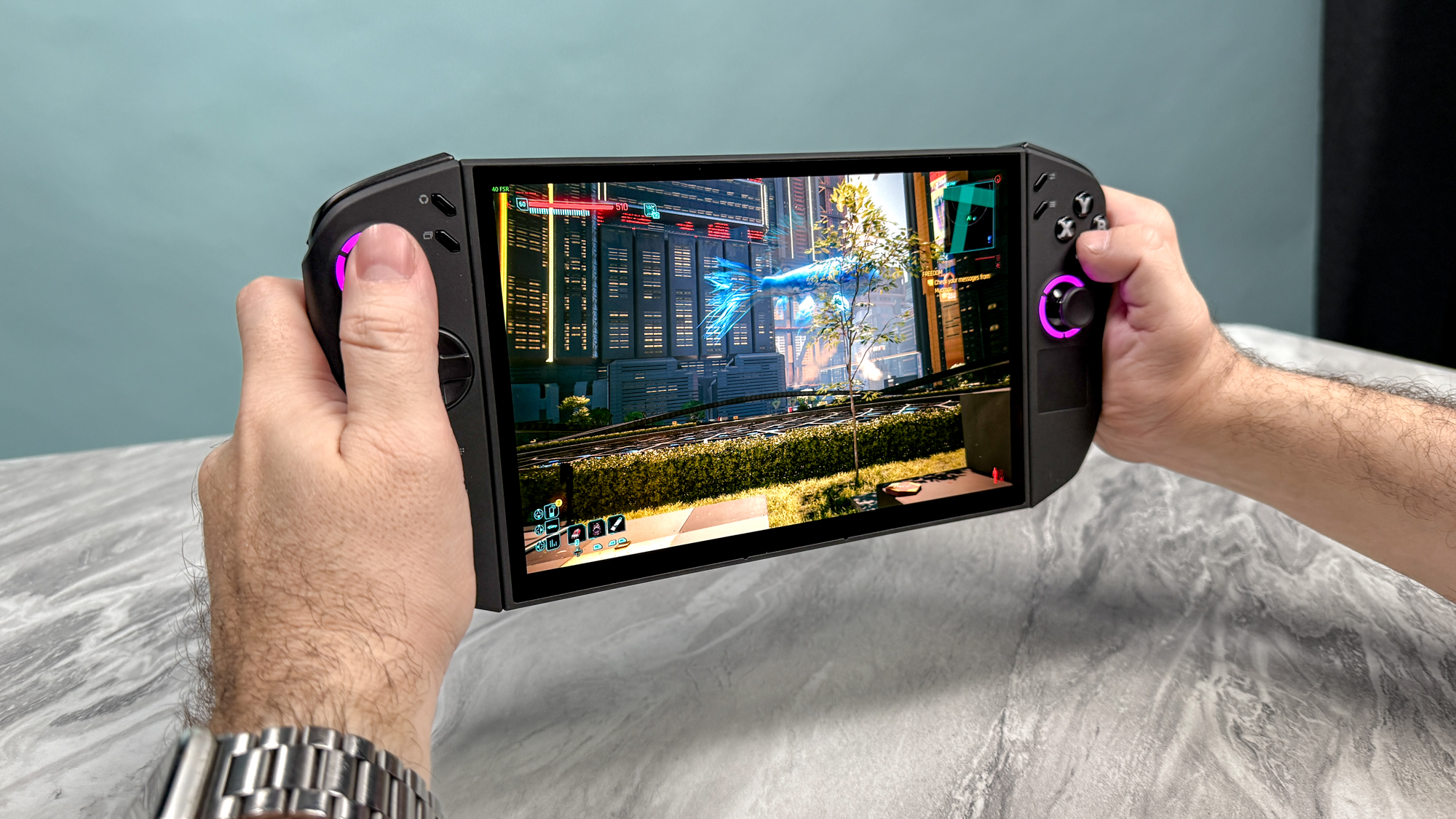
Besides its unique design (which I’ll cover shortly), the Legion Go 2 stands out due to its gorgeous 8.8-inch OLED panel. Only a handful (pun intended) of handhelds feature an OLED panel, so this is a huge selling point.
In addition to the contrast the OLED panel provides, the Legion Go 2 supports HDR, which the previous model lacked. When I fired up Cyberpunk 2077, I was impressed by Night City’s bright and vibrant neon lights and holograms. Everything looked equally mesmerizing when I swung around Manhattan in Marvel's Spider-Man 2. The OLED panel is a wonder to behold.
| Row 0 - Cell 0 | Legion Go 2 | Legion Go S | Asus ROG Ally X |
Nits (brightness) | 445 (SDR) | 623 (HDR) | 441 | 523 |
sRGB | 191.7% | 116.3% | 112.7% |
DCI-P3 | 135.8% | 82.4% | 79.8% |
Delta-E | 0.28 | 0.33 | 0.36 |
Our lab tests confirm my experience. As you can see above, the Legion Go 2 delivers oversaturated colors (sRGB and DCI-P3) compared to the Legion Go S and Asus ROG Ally X. Lenovo’s latest handheld also has strong color accuracy (Delta-E).
One thing to note is that the Legion Go 2 has a lower 1200p resolution from its predecessor’s 1600p. That might sound bad, but it doesn’t make an appreciable difference when you’re playing—especially when you’re so enthralled by the OLED panel. The buttery smooth 144Hz refresh rate also helps you forget about the lower (but still sharp) resolution.
Strong performance (with FSR)
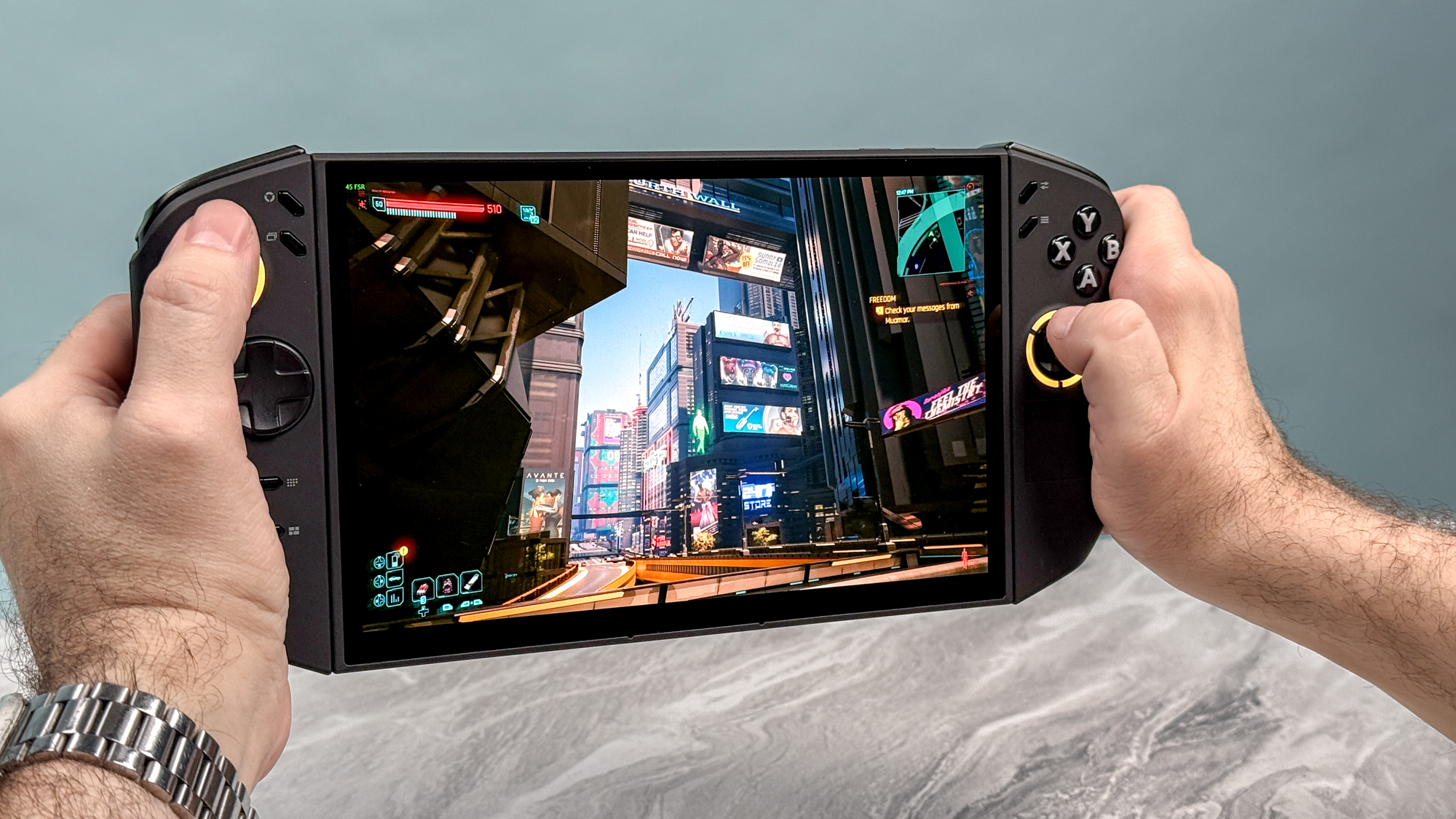
Our Lenovo Legion Go 2 review unit (valued at $1,349) packs an AMD Ryzen Z2 Extreme chip, 32GB of RAM and a 1TB SSD. Thanks to those components, I expected big performance gains over handhelds with the now last-gen Ryzen Z1 Extreme processor. While the Legion Go 2 can deliver impressive performance, you’ll have to seriously tinker with the settings to get there.
In our lab tests, we run several games through their respective built-in benchmark tool with graphics set to Ultra at a device’s native resolution. At those maxed-out settings, the Legion Go 2 struggles to deliver satisfying performance.
| Row 0 - Cell 0 | Legion Go 2 | Legion Go S | Asus ROG Ally X |
Cyberpunk 2077 | 4.45 fps | 4.52 fps | 4.94 fps |
Dirt 5 | 34.4 fps | 32.2 fps | 24 fps |
Far Cry 6 | 28 fps | 31 fps | 24 fps |
As you can see in the table above, Cyberpunk 2077 can barely run at 5 frames per second, which is decidedly unplayable. Dirt 5 fares decently at 34 fps, while Far Cry 6 can barely hit 30 frames per second. These results are bad enough, but they’re made worse when you see that the AMD Ryzen Z2 Extreme-powered machine has marginally better performance than handhelds with the Z1 Extreme chip.
While our in-house testing paints a bleak picture, my own anecdotal testing shows the potential of AMD’s latest handheld APU.
I was initially disappointed when I started playing Cyberpunk 2077 and saw frame rates hover in the mid-30s in the game’s default graphical and display settings. Lowering the resolution to 800p bumped the frame rates into the high 50s/low 60s, though I wasn’t happy losing visual fidelity. Thankfully, enabling AMD’s FSR 3 boosted the framerate to the mid-50s at the native 1200p resolution. I consider that a good compromise of graphical quality and gaming performance.
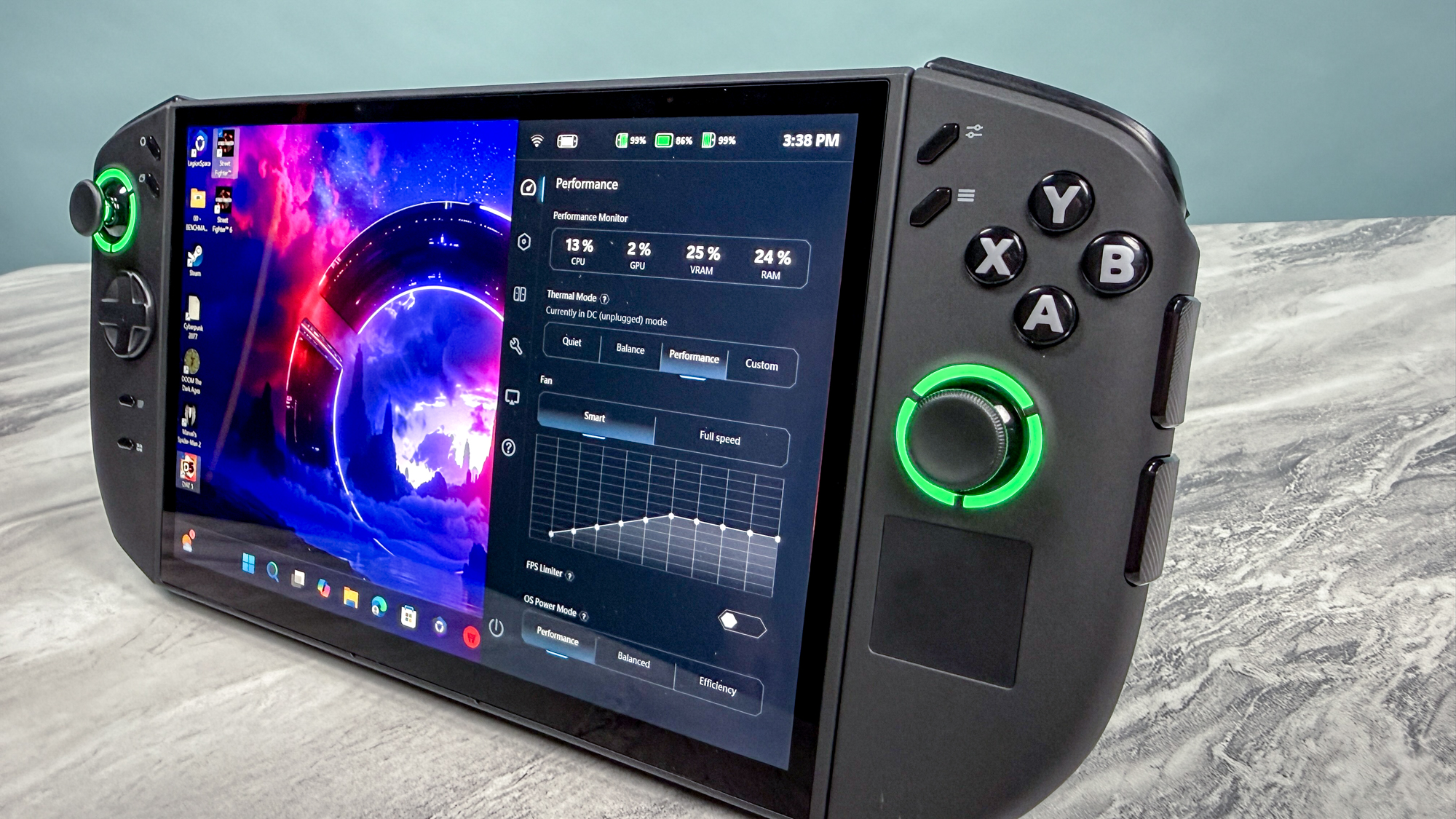
You can bring up the Legion Go 2’s Quick Settings sidebar to adjust things like performance, display resolution and refresh rate, controller vibration, and more. To get the best performance possible, you can toggle on Radeon Super Resolution (RSR) within the General sub-menu. I didn’t get the best results until I toggled this option, so it’s important to keep that in mind to get smooth gameplay.
If you take the time to adjust system and game settings, the Legion Go 2 can offer impressive gaming performance. If it wasn’t clear already, FSR is the Legion Go 2’s secret weapon for smoother gameplay.
Ergonomic design
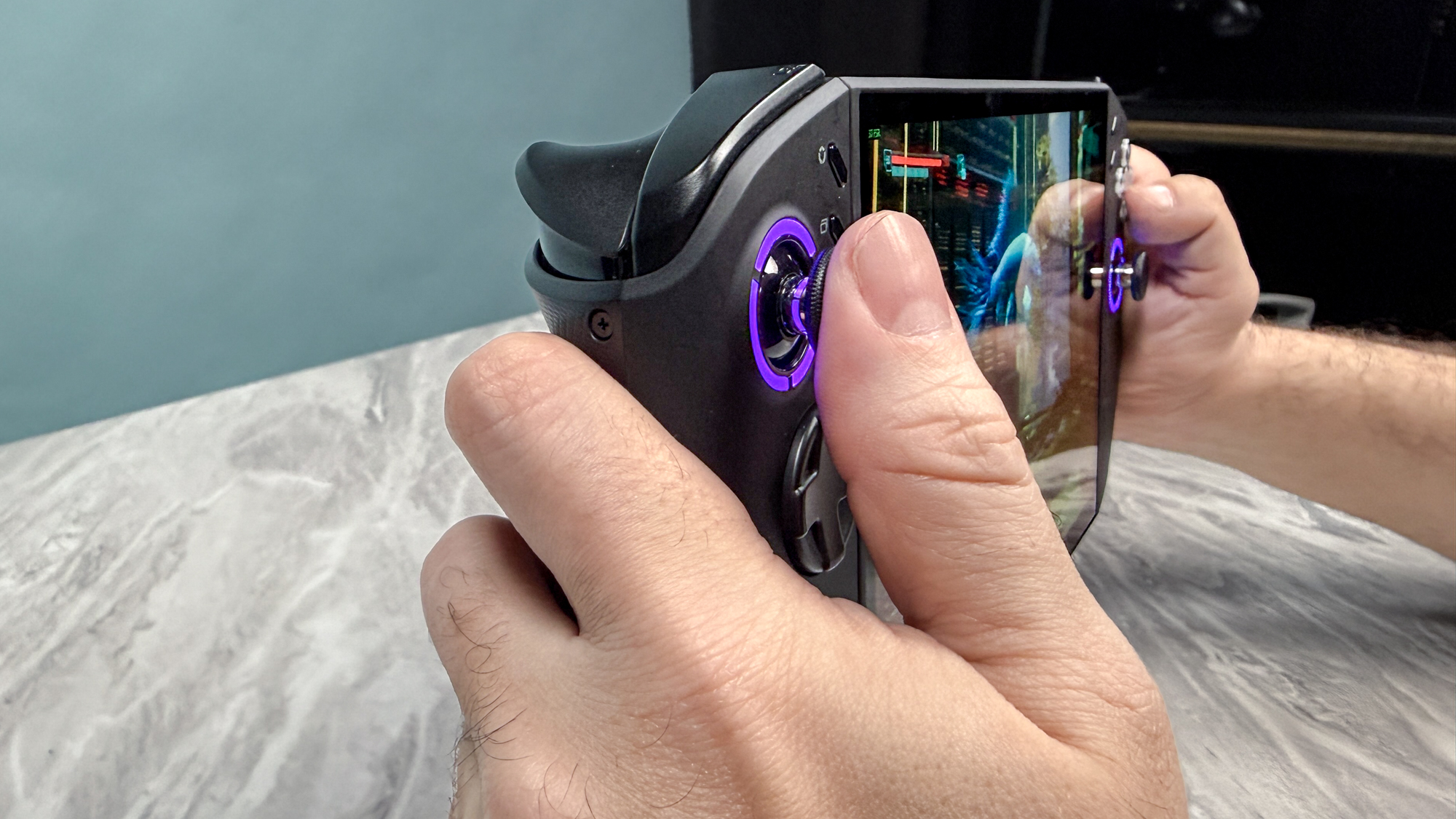
Design-wise, the Legion Go 2 is largely similar to its predecessor. With the controllers attached, the handheld measures 11.64 x 5.38 x 1.66 inches and weighs 2.03 pounds. That’s slightly bigger and heavier than the original, but it’s much more comfortable to hold thanks to its rounder controller grips and even weight distribution.
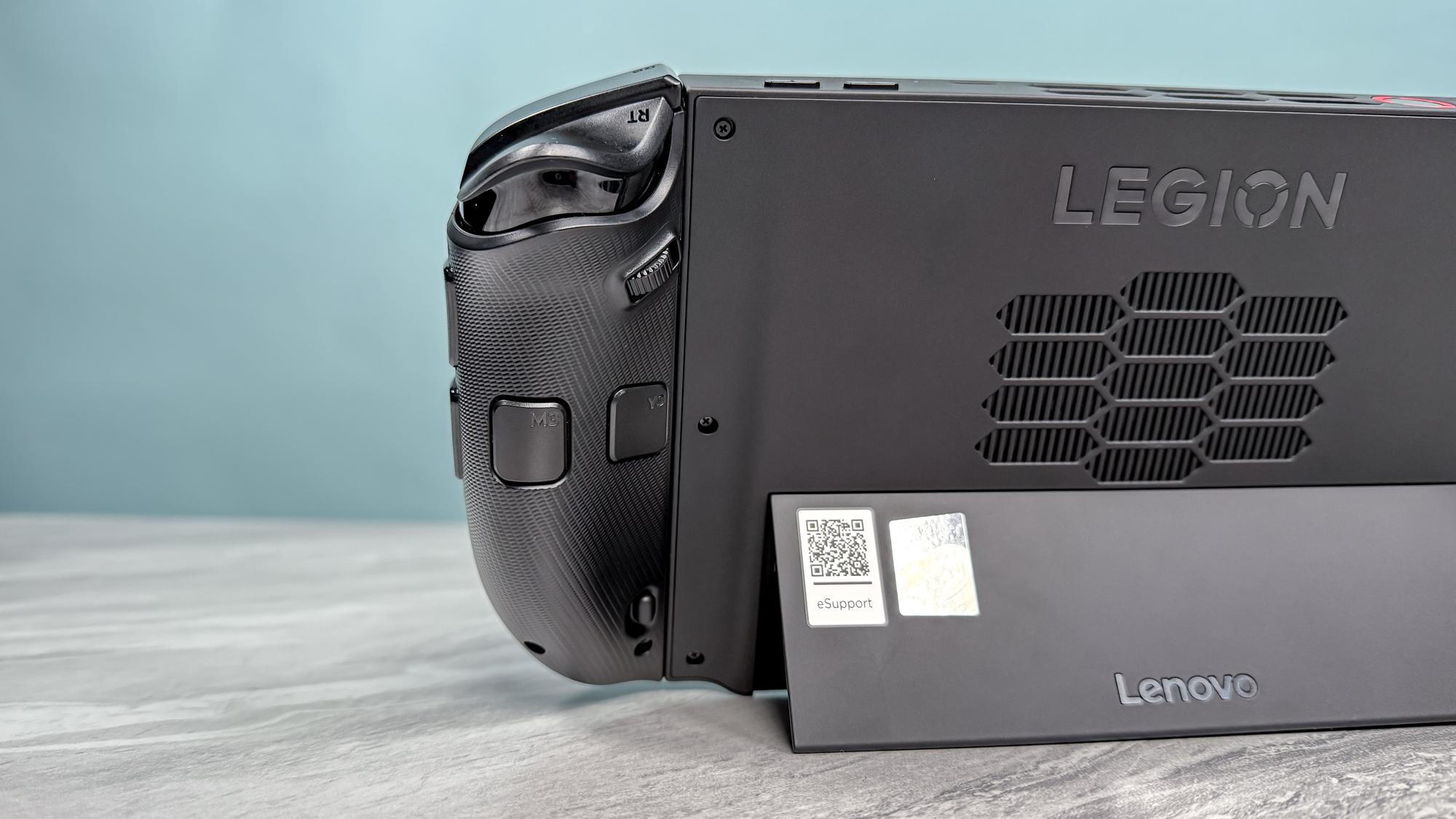
That said, the Legion Go 2 might become heavy to hold for long periods. Thankfully, you can use the kickstand on the back to set up the handheld on a flat surface and play that way. There’s also an optional Switch-like grip for the controllers, though we didn’t receive one with our review unit. If the Legion Go 2 gets too heavy, you can always follow my lead and keep it on a table with the controllers attached.
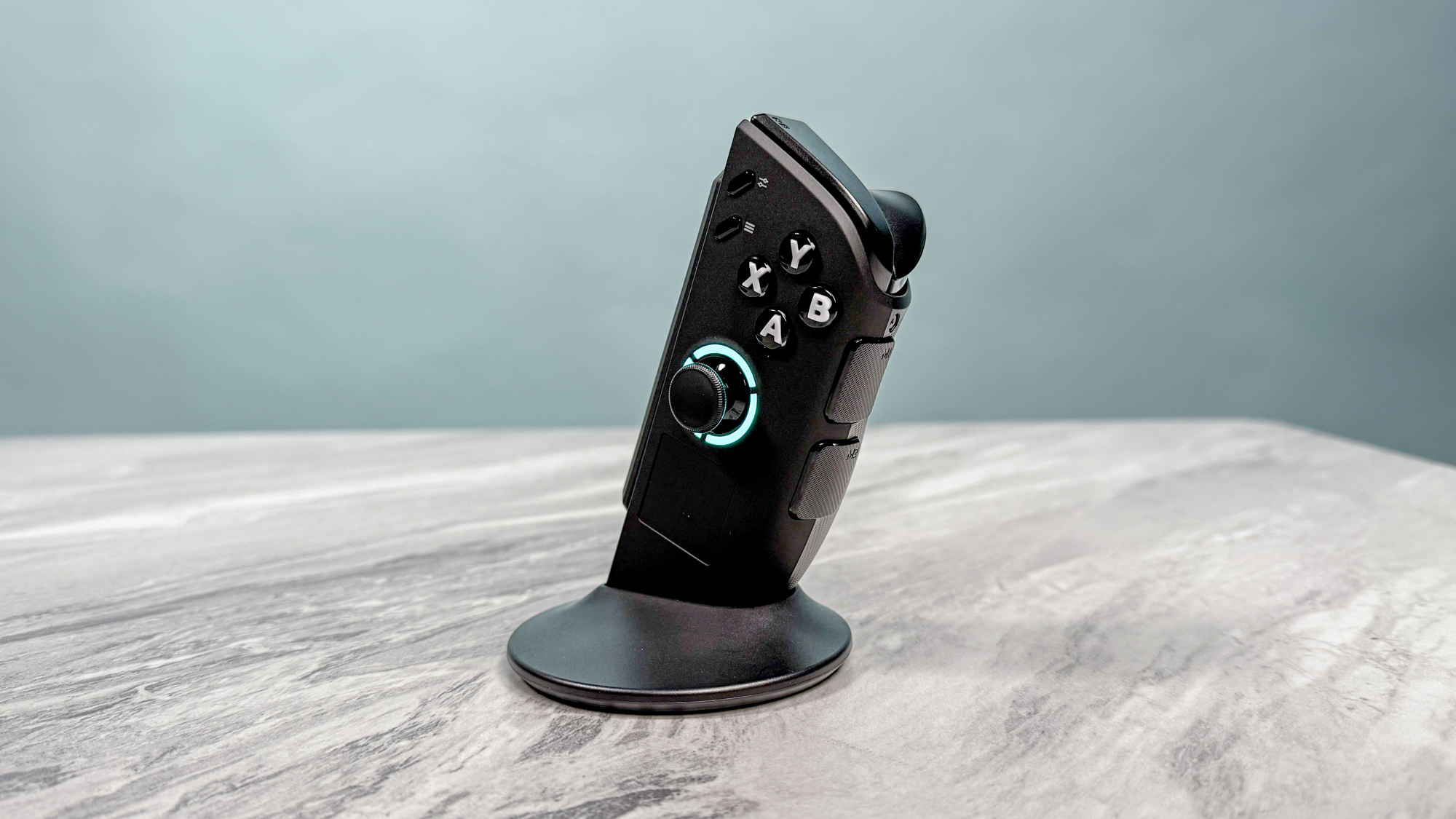
The detachable controllers aren’t radically different, but they have been redesigned with more ergonomic lines, a smoother feel and a more intuitive button layout. As before, you can use the right controller as a vertical mouse for more natural control in FPS games.
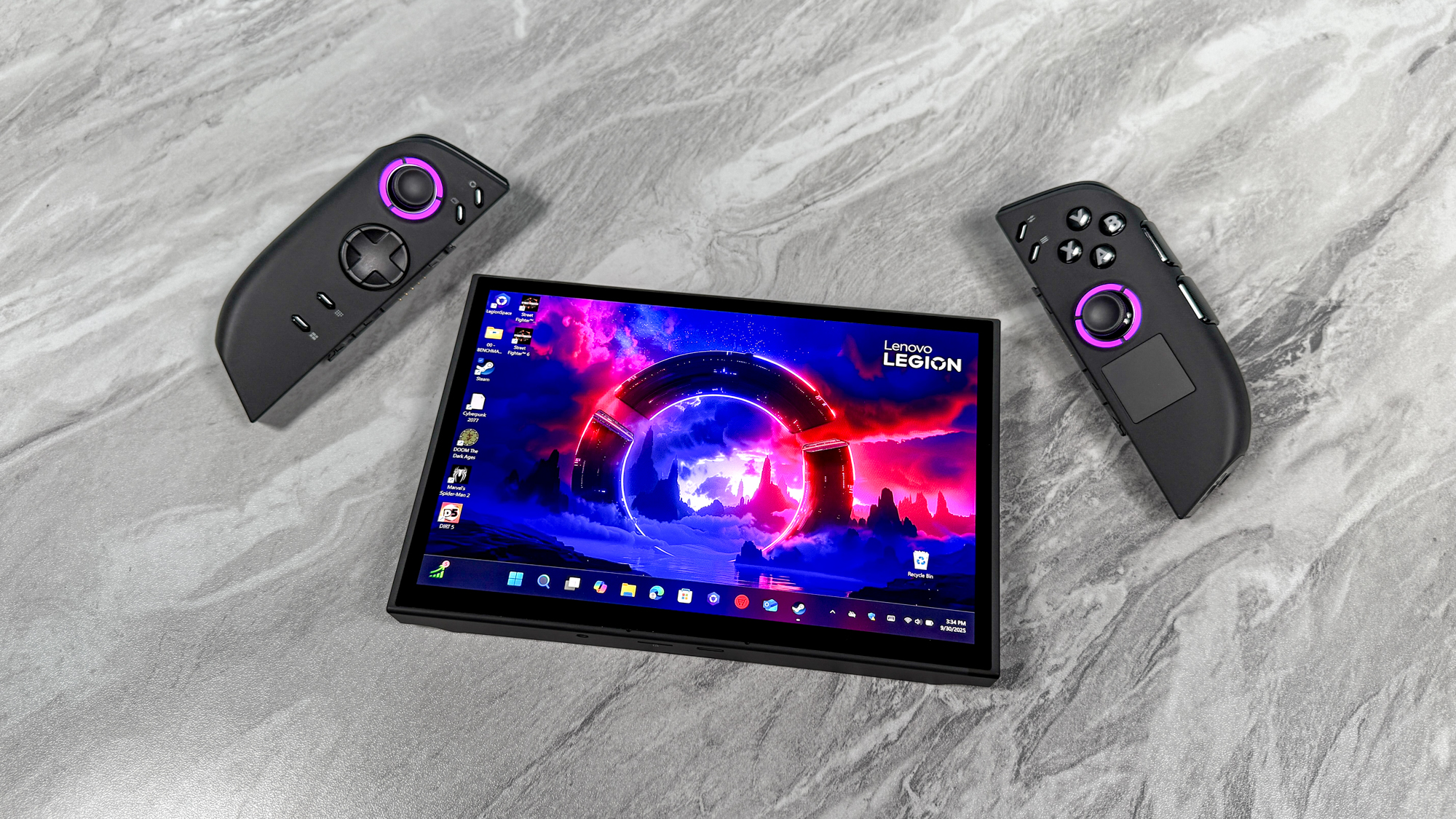
The Hall Effect joysticks are fluid and responsive, with just the right amount of tension when you move them. I also love the larger and rounded D-pad, which is better suited for playing fighting games like Street Fighter 6. And in case you were wondering, the new controllers are backward compatible with the original Legion Go.
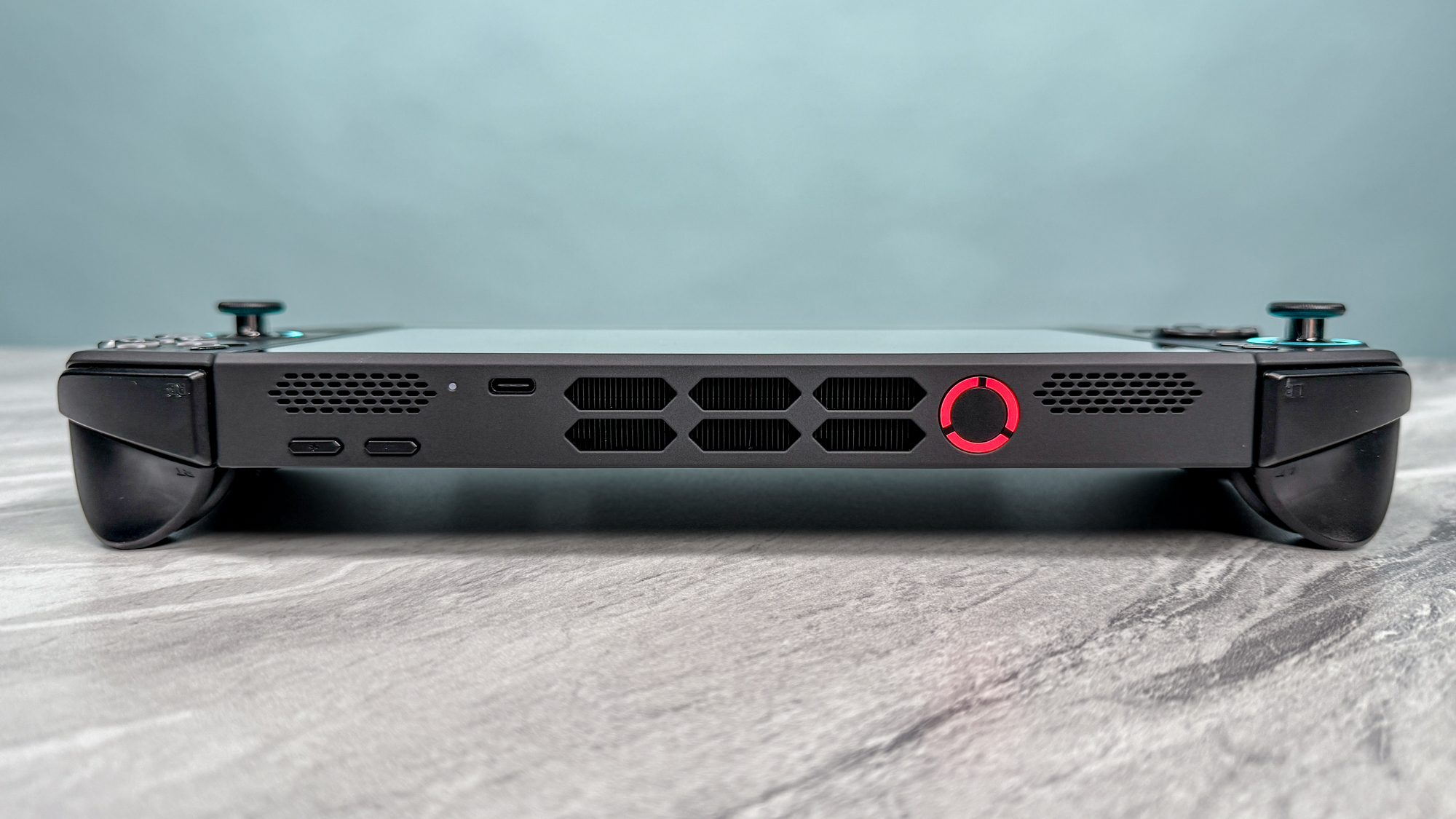
Last but not least is the port selection. You get the same number as before, which includes two USB-C/USB 4 ports, one located on the top and the other on the bottom. There’s also a 3.5mm headphone jack and a microSD card slot. The power button also has a fingerprint reader, like the original Legion Go.
Lenovo Legion Go 2 review: The downs
There’s a lot to like about the Legion Go 2, but the handheld also has several downsides that could deter you from purchasing this device.
Steep price
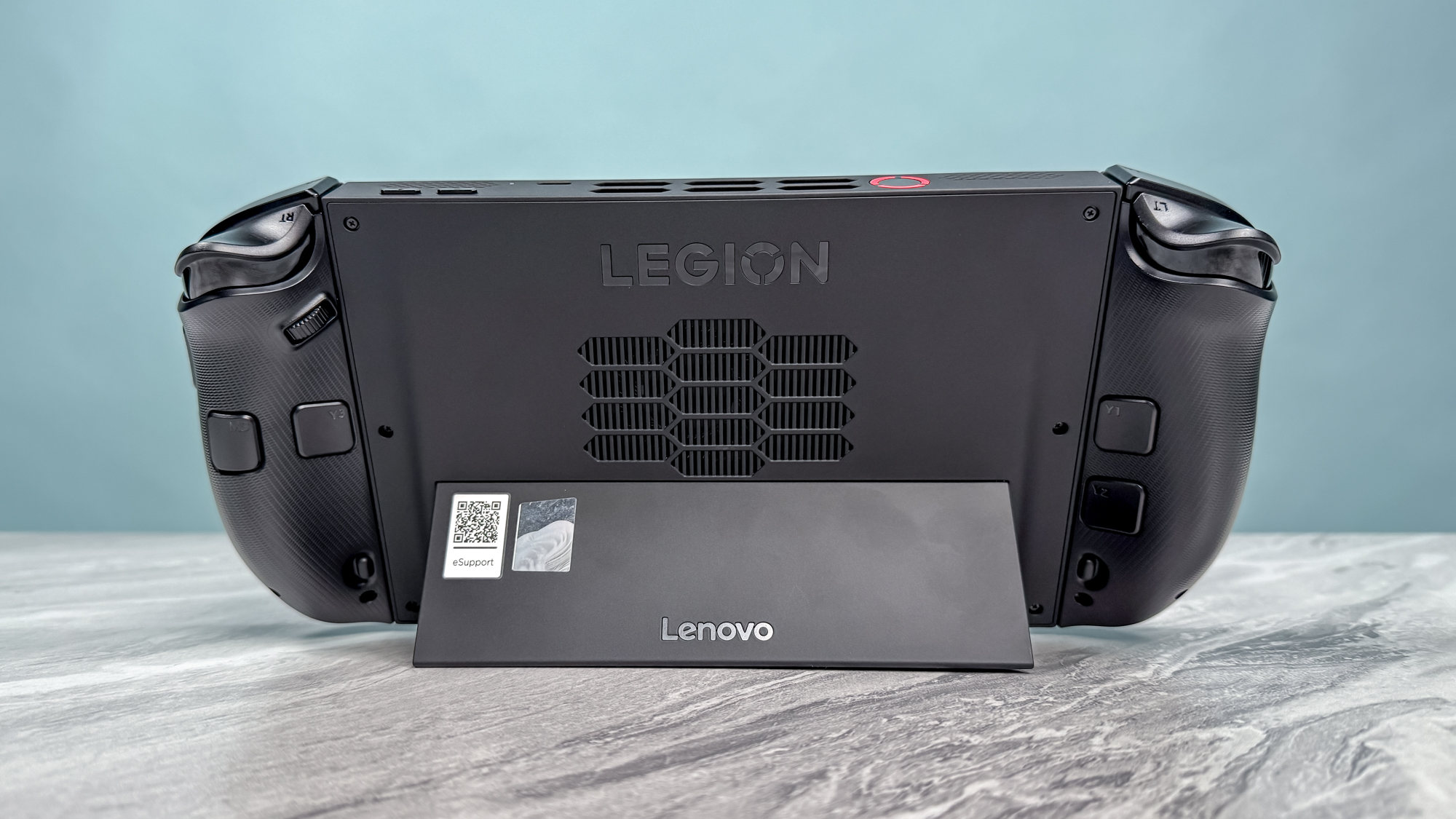
Right now, the Legion Go 2 is the most expensive gaming handheld available from a major manufacturer. It certainly has great features, but its price point will no doubt be a deterrent for many potential buyers.
The Legion Go 2 starts at $1,099 for a model with the regular Ryzen Z2 chip and a whopping $1,479 for a fully decked out model with 2TB. In comparison, the Asus ROG Xbox Ally with a Z2 chip starts at $599 for the base model, while the upcoming ROG Xbox Ally X with a Z2 Extreme chip costs $999. That latter price isn’t exactly cheap, but it’s still less expensive than even the base Legion Go 2.
Considering how the original Steam Deck is currently selling for $319 (down from $380), the Legion Go 2’s high price isn’t easy to swallow.
Midling battery life
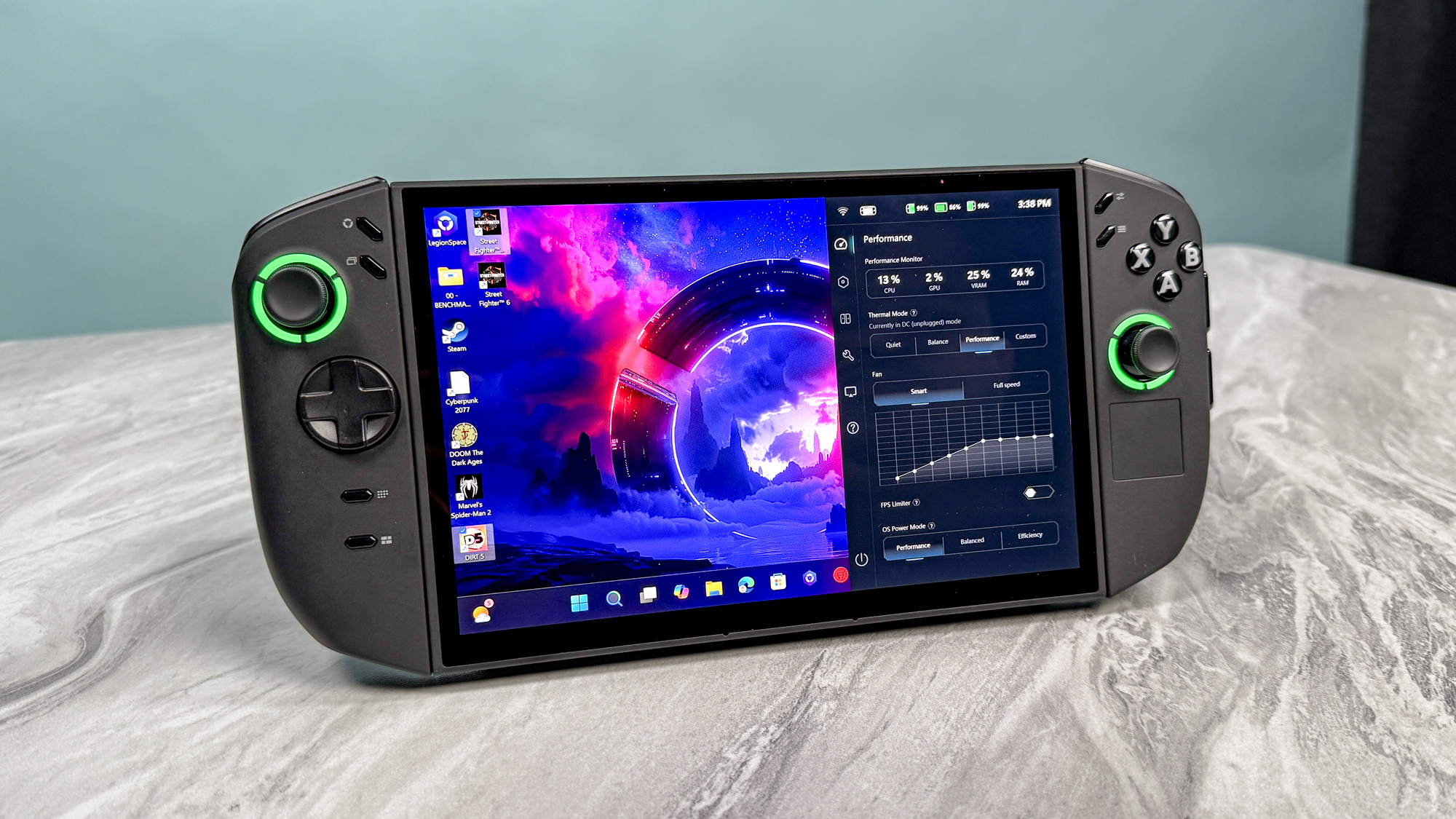
Like gaming laptops, gaming handhelds don’t have the best battery life. And while the Legion Go 2 boasts great battery life when surfing the web, its gaming battery life won’t win any awards.
| Row 0 - Cell 0 | Web surfing | Gaming |
Lenovo Legion Go 2 | 10:45:10 | 2:15 |
Lenovo Legion Go | 6:32:19 | 1:59 |
Asus ROG Ally X | 8:19:08 | 3:14 |
In our battery test, which involves continuous web surfing at 150 nits of screen brightness, the Legion Go 2 lasted for 10 hours and 45 minutes. If you want to use the system for basic tasks like web surfing or watching videos, you can do so for a reasonable length of time. That said, if you’re interested in the Legion Go 2’s primary function, i.e., gaming, don’t expect it to endure long.
In the PCMark 10 gaming battery test, the Legion Go 2 lasted for 2 hours and 15 minutes. That’s slightly longer than its predecessor, but an hour less than the ROG Ally X. If you plan to play this system while on the road, don’t forget to bring its included 65W charger.
Windows 11
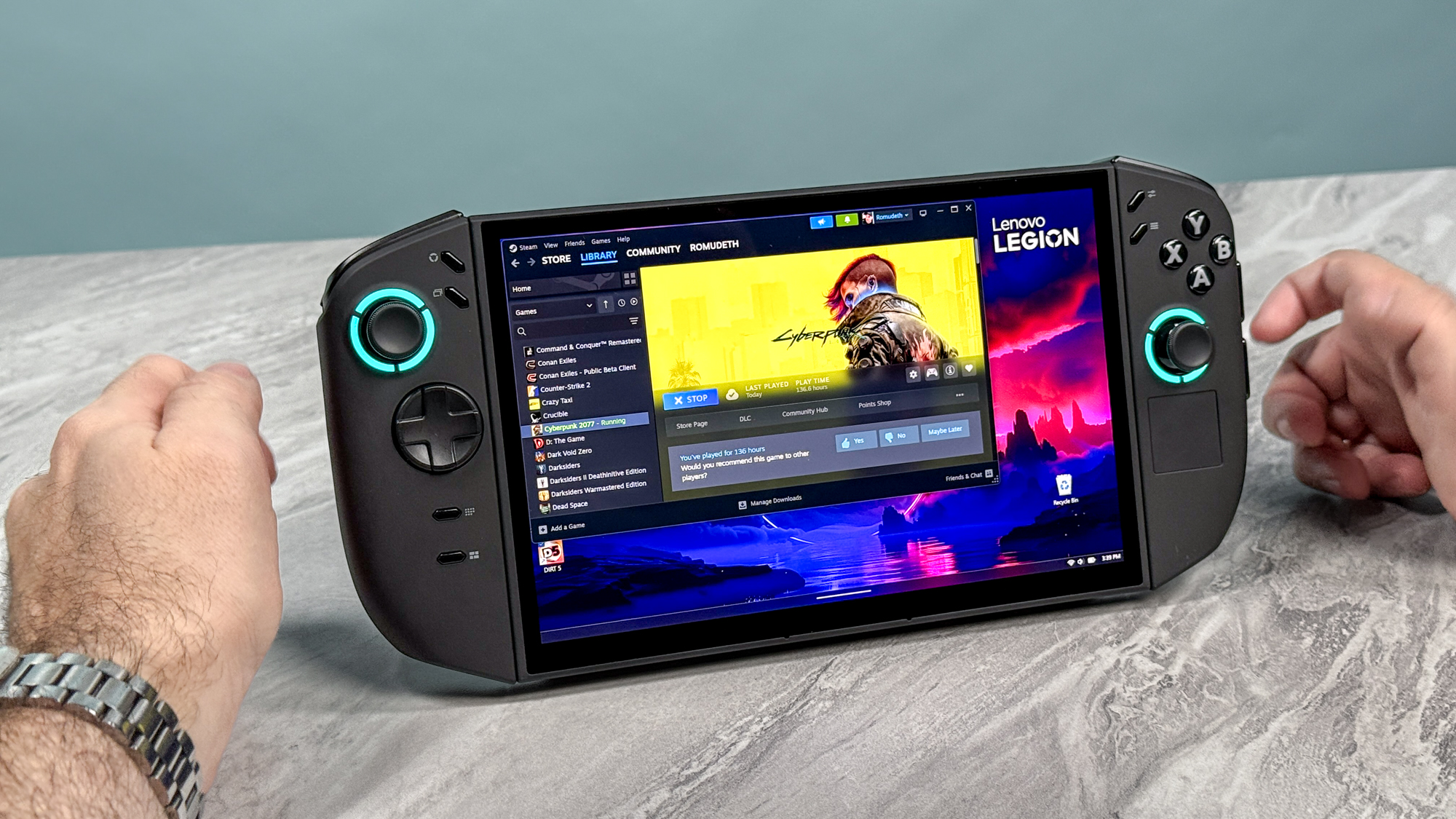
If you’ve read any of our handheld reviews or opinion pieces, then you know we’re not fond of Windows 11 for handhelds.
While the OS is great for the best gaming laptops and the best gaming PCs, it doesn't work well with a handheld's control scheme. Since you can't navigate through most of Windows (especially the desktop), you're forced to move the mouse cursor with the right analog stick, or otherwise use your finger like you would on one of the best tablets. This can be a chore, even on the large 8.8-inch screen.
Windows 11 also seems to contribute to slowing down gaming performance and battery life, which is something we noted when we installed SteamOS on the original ROG Ally X and saw improved performance and battery life.
Windows 11 might have greater game compatibility and system customization than SteamOS, but Valve’s OS is specifically designed for handhelds, so it’s easy to jump into your favorite games without a hassle. This is evident not only on the Steam Deck, but on Lenovo’s own Legion Go S with SteamOS.
Given the usability of SteamOS and how the ROG Xbox Ally has a lighter version of Windows more suitable for handhelds, a handheld running pure Windows 11 seems even more glaring.
Lenovo Legion Go 2 review: Verdict
The Legion Go 2 just comes up short of being an easy recommendation. Sure, I love the gorgeous OLED display, and you can get pretty good gaming performance with some tinkering. The more ergonomic design and smooth Hall effect joysticks are also huge bonuses.
Unfortunately, the system’s affordability ultimately makes it a hard sell; the fact that it runs on basic Windows only compounds the frustration. However, if and when we’re able to install the leaner version of Windows that’s on the ROG Xbox Ally the Legion Go 2 could be a more enticing gaming handheld—especially if Lenovo cuts the price or runs a big sale.
As things currently stand, you might want to consider a cheaper alternative, such as the Steam Deck OLED ($649) or the upcoming ROG Xbox Ally ($999). However, if you can stomach the price you can have a lot of fun with the Legion Go 2. For what it offers, it’s still a great handheld…just not the best.

Tony is a computing writer at Tom’s Guide covering laptops, tablets, Windows, and iOS. During his off-hours, Tony enjoys reading comic books, playing video games, reading speculative fiction novels, and spending too much time on X/Twitter. His non-nerdy pursuits involve attending Hard Rock/Heavy Metal concerts and going to NYC bars with friends and colleagues. His work has appeared in publications such as Laptop Mag, PC Mag, and various independent gaming sites.
You must confirm your public display name before commenting
Please logout and then login again, you will then be prompted to enter your display name.
